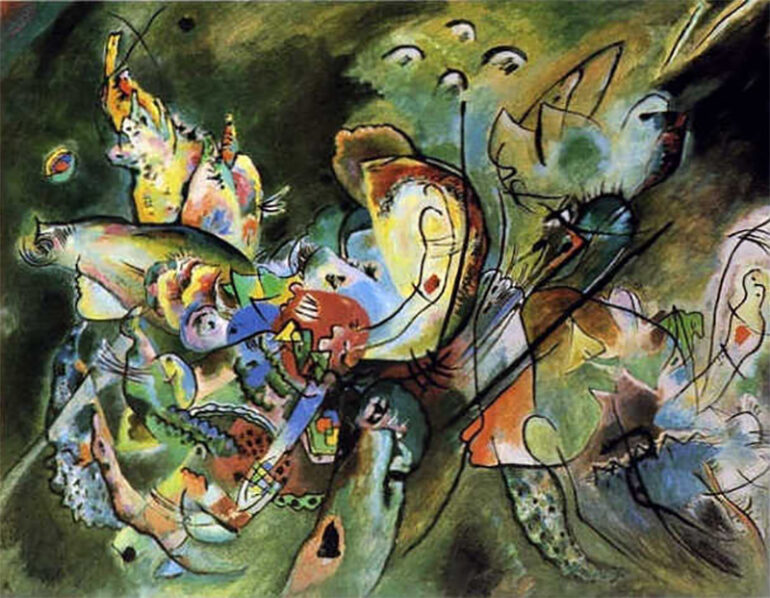Lead by visionaries like Wassily Kandinsky and Piet Mondrian, who transformed creative expression with vivid colors and geometric accuracy, abstract art has experienced a revolutionary journey. Their trailblazing attitudes broke down barriers and sparked a fresh surge of inventiveness for movements like surrealism and cubism. Abstract art is still being pushed by modern artists, who investigate several forms and methods to reimagine the creative world with unmatched inventiveness and inspiration.
Wassily Kandinsky: The Father of Abstract Art
The abstract movement owes Wassily Kandinsky, whose groundbreaking approach to painting won him the moniker “The Father of Abstract Art.” Beyond conventional representational painting, Kandinsky aimed to arouse strong emotions in viewers with his use of vivid colors and geometric forms. His conviction that painting had a spiritual force produced works of art that defied accepted artistic standards and encouraged succeeding generations of artists to venture into uncharted territories of expression and innovation.
A dramatic break from conventional artistic conventions brought forth by Kandinsky’s pioneering spirit helped abstract art become more widely seen as a valid and deep channel for emotional and intellectual inquiry. The ways that modern artists still put emotional impact ahead of realistic portrayal in an effort to connect with viewers on a deeper, more intuitive level are clear examples of his influence. Kandinsky is a key figure in the history of contemporary art as this development of creative focus represents a major change in the way art is seen and valued.
Piet Mondrian: Embracing Geometric Abstraction
Piet Mondrian’s creative path included geometric abstraction and established him as a major contributor to the development of abstract painting. Mondrian was a master of accuracy and simplicity; his famous compositions used straight lines that intersected at right angles and basic colors. In keeping with his conviction that art has a spiritual value, his painstaking arrangements sought to communicate cosmic harmony and order. Mondrian’s unique style demonstrates the constant influence of his geometric vision on modern art and design.
The Evolution of Abstract Art: From Cubism to Surrealism
Beyond Kandinsky and Mondrian: Exploring New Frontiers in Abstract Art
Beyond the influence of Kandinsky and Mondrian, modern painters have been pushing the envelope of inventiveness and invention in abstract painting. Using a wide variety of media and approaches, these artists question accepted ideas about art and perception and encourage spectators to approach art in novel and unusual ways. By their audacious experimentation and unafraid investigation, these contemporary trailblazers reshape the abstract art scene and provide endless creativity and originality for its future course.
The contributions of forebears like Kandinsky and Mondrian are like beacons in the always changing field of abstract painting, directing modern artists who dare to push the envelope of what is possible. By their unafraid experimentation and unbounded inventiveness, these contemporary visionaries keep redefining the abstract art scene, challenging perception and enticing spectators to go on unusual creative adventures. Abstract painting’s future expands with an unbounded creativity and inventiveness with every brushstroke and novel technique.
Photo Attribution:
1st & featured image by https://commons.wikimedia.org/wiki/Category:1917_paintings_by_Wassily_Kandinsky#/media/File:Kandinsky_-_Overcast,_1917.jpg
2nd image by https://commons.wikimedia.org/wiki/Category:Cubism#/media/File:Eugene_Ivanov_556.jpg

